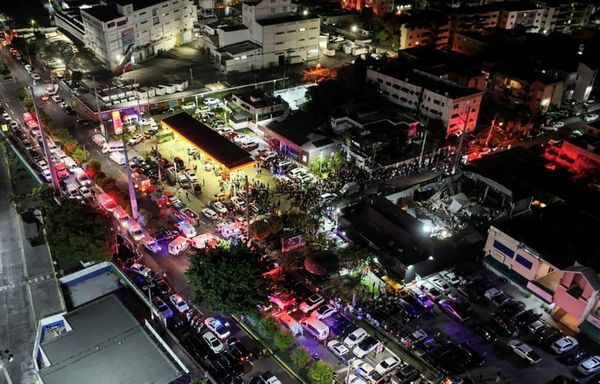Ranil Wickremesinghe’s election as the President of Sri Lanka in a crucial Parliament vote on July 20, 2022, gives India an opportunity to take the lead in the foreign aid game in its neighbourhood. Sri Lanka has been facing economic turbulence since its pre-emptive default on its foreign debt obligations in mid-April this year — the mass protests in its wake eventually forcing the former President of Sri Lanka, Gotabaya Rajapaksa, to flee the country on July 12.
Deepening woes
Following the debt default and a shortage of dollars, the Sri Lankan economy is experiencing stagflation. Inflation has spiralled to over 50%, translating into higher food and fuel prices. Many families are surviving on one meal a day. The economy could contract by at least 6% in 2022. Some three-quarter of a million people are becoming the ‘new poor’. Sri Lanka’s worst economic crisis since its independence in 1948 is due to a tepid recovery from the COVID-19 pandemic, the Russia-Ukraine conflict shock and economic mismanagement under the administration of the Rajapaksas.
Sri Lanka is also facing challenges in getting foreign aid, as 60% of the world’s poorest countries are also experiencing debt distress; further, the prospect of a second global recession in three years could dampen enthusiasm to support Sri Lanka.
There are questions by some on why taxpayers in another country should bail out a failed economy such as Sri Lanka, when the perception is that Sri Lanka’s debt default is largely one of its own making — the result of mismanagement and corruption.
Opportunity for India
India was the first responder to Sri Lanka’s desperate calls for foreign aid to help tackle its crippling debt and economic crisis. India has been motivated by the unfolding humanitarian crisis affecting the Sri Lankan people and the political pressure from South India for Indian intervention. In the first six months of 2022, Indian aid worth $3.8 billion has flowed to Sri Lanka through loans, swaps and grants. This is India’s largest bilateral aid programme in recent times.
Supporting Sri Lanka could be in India’s best interests. Stabilising Sri Lanka’s economy could prove to be a major win for Indian Prime Minister Narendra Modi’s ‘neighbourhood-first’ policy. Moreover, once the Sri Lankan economy stabilises, India can deepen its trade and investment linkages with Sri Lanka, transcending the current humanitarian aid relationship. This could spur regional integration and prosperity. On the other hand, an unstable Sri Lankan economy could pose security risks to India and lead to a flood of refugees across the Palk Strait. This is an opportunity for India to strengthen bilateral and regional partnerships.
Dimensions to Chinese aid
In recent years, China has emerged as a major partner for Sri Lanka, especially for infrastructure projects, many of which are under scrutiny now. This provides an opportunity for India to upscale its aid and cement its first mover advantage over China by leading an aid consortium for Sri Lanka, working closely with other friendly countries such as the United States, Japan and the European Union as well as the International Monetary Fund (IMF). Back of the envelope calculations suggest that Sri Lanka would require financing that falls between $20 billion to $25 billion over the next three years to ensure essential imports of food, medicine and fuel for its people and help in stabilising the economy.
Despite gaining benefits from commercial loans for Belt and Road Initiative (BRI) projects in Sri Lanka which has fuelled a ‘debt trap’ narrative, China faces a dilemma in bailing out Sri Lanka. China worries that unilaterally restructuring Sri Lanka’s debt or giving it moratoria would set a new precedent in its lending practices, leading to a queue of similarly distressed countries seeking debt relief from Beijing. Furthermore, China, which is a G2 economy, and wanting to challenge the U.S., does not want its reputation to be tarnished by bailing out a floundering economy.
Steps to take
There are five important items in the in-tray of the new administration under President Wickremesinghe.
The government must show that it is serious about stabilising the economy by concluding talks on an IMF programme which will increase taxes and utility prices to raise revenue and increase interest rates to control inflation while preserving social welfare expenditures to protect the poor.
It has to implement structural reforms to make the economy more open to trade and investment and allow market forces to determine resource allocation. This means reducing barriers to trade and investment, cutting red tape hampering business and privatising loss-making state-owned enterprises such as Sri Lankan Airlines and the Ceylon Petroleum Corporation.
It has to build national consensus on implementing the IMF programme and reforms by explaining that this is the only solution to the crisis.
It has to restore the rule of law and enforce strong anti-corruption policies (including asset declarations for all parliamentarians and a strong anti-corruption office supported by the United Nations). Later, the executive presidency should be abolished.
It has to reset foreign policy towards a more neutral direction and away from the pro-China stance of the Rajapaksas.
With political will and the right set of policies, Sri Lanka stands a sporting chance of achieving some economic normalcy within the next three years. India stands to gain by supporting Sri Lanka in its hour of need. A friend in need is a friend indeed.
Ganeshan Wignaraja is Non-Resident Senior Fellow, Institute of South Asian Studies (ISAS), National University of Singapore, and former Director of Research of the Asian Development Bank Institute in Tokyo







